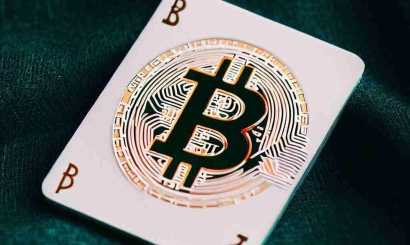"Need new drivers." What will happen to Bitcoin in the coming week?
Soft4bro experts have assessed the Bitcoin exchange rate until February 4th. Experts analyzed the market situation and explained how it could change in the upcoming week.
On Sunday, January 28th, Bitcoin (BTC) is trading at $42.3 thousand, with its price increasing by almost 2% since the end of the previous week. Specialists analyzed the market situation and evaluated the prospects for Bitcoin's exchange rate movement in the next seven days.
"Investors have adopted a wait-and-see position."
Financial analyst Vladislav Antonov from BitRiver
From January 22nd to January 28th, the price of Bitcoin showed high volatility. Throughout the week, Bitcoin traded in a wide range from $38,555 to $42,246. At the time of writing the review, the weekly chart is colored green.
On Monday, January 22nd, the price fell below the $40 thousand mark, reaching $39,480. The drop was caused by an active outflow of funds from Grayscale's Bitcoin ETF amid the approval of competing products.
The inflow of funds into the Bitcoin ETF increased significantly. Why is the cryptocurrency getting cheaper?
On Tuesday, January 23rd, the price dropped to a minimum of $38,555, leading to a wave of liquidations in the futures market. The outflow from Grayscale continued to exert pressure.
On January 24th and 25th, quotes consolidated in the range of $39,484 to $40,555 with mixed dynamics. High volatility persisted in the market. Market participants were awaiting any positive news.
On Friday, January 26th, by the end of the day, the BTC/USD pair increased by 4.66% to $41,823. Buyers managed to halt the crypto market collapse. After a 13-day decline of 21% from the January 11th peak at $48,969, the price recovered by 9.57% to $42,246. They offset the decline on January 22nd, which is a positive factor for the entire market.
The downward correction in Bitcoin was largely associated with redemptions in the Grayscale Bitcoin Trust (GBTC). Before GBTC was converted into an ETF on January 11th, it was one of the few ways for U.S. investors to access BTC without owning the underlying cryptocurrency. After the long-awaited approval on January 10th, investors took the opportunity to sell their GBTC shares, locking in profits from their transactions. This meant an exit from the cryptocurrency market, hence the downward pressure on the price of Bitcoin. The outflow from the fund amounted to almost $4 billion.
The daily inflow of funds into the Bitcoin ETF turned negative for the first time.
The price bounced back from the $38,555 support. The recovery accelerated after JPMorgan stated that the peak of GBTC sales was mostly over. The upward correction intensified with the European session as the dollar index fell. The outflow of funds from the Grayscale Trust slowed down, leading to a weakening of pressure on the cryptocurrency.
BlackRock's iShares Bitcoin ETF (IBIT) had a significant impact on the cryptocurrency investment industry. In just 10 days after the fund's launch, the company accumulated $1,982,095,794 or 49,952.32570 BTC (from the BlackRock website report) under management (AUM) after the fund's launch and market entry. The amount indicates significant interest among investors. At the current exchange rate, this is already over $2 billion.
At the time of writing, the BTC/USD pair is trading at $42.3 thousand. Cautious investors have adopted a wait-and-see position, as this is only the first upward wave after the market crash. Later, sellers will once again test buyers on how willing they are to defend the $38,555 level and push the price towards $69 thousand by the halving, which is expected around April 20th.
According to BitRiver's forecast, the downtrend phase will conclude on February 10th. Afterward, it's possible to test the $50,000 level to support the bullish trend from the minimum of $24,901 on September 11, 2023. The higher buyers push the price, the lower the probability of revisiting the support at $38,555.
For buyers, there is excellent news — a pin bar is forming on the weekly chart, a green body with a long lower shadow. Recall that the descent from $48,969 began with such an inverted candle. This sets the stage for a rise to $45,000.
The economic calendar is quite rich in important data. On January 30th, Eurozone GDP data for the fourth quarter will be released. On January 31st, China's Manufacturing Purchasing Managers' Index (PMI) for January, reports on oil inventories from the American Petroleum Institute and the US Department of Energy, the FOMC meeting, and a press conference by J. Powell will be published. On February 1st, the United States will release the Manufacturing Purchasing Managers' Index, and on February 2nd, the employment market report (unemployment, new job additions, average hourly wage), as well as the Consumer Sentiment Index from the University of Michigan for January.
Regarding the Federal Reserve's next steps, the CME Group FedWatch tool predicts a 96.7% probability of maintaining rates at the FOMC meeting next Wednesday (January 31st). Voices in March are divided, but the likelihood of a cut in May is estimated at around 87%.
"Don't expect quick effects."
Regional Director of the CommEX exchange, Anton Toropcev
Last week, Bitcoin showed mixed movement. Starting the week at $41,500, Bitcoin dropped to $38,600 — the lowest value since early December. This fueled discussions about a possible market reversal and the emergence of bearish sentiment. However, by the weekend, Bitcoin managed to overcome resistance and returned to levels above $40,000, even testing $42,000. However, it hasn't been able to hold above this mark.
The macroeconomic situation in the US economy has a restraining effect on the cryptocurrency market. Investors fear that, amid ongoing high inflation, still far from the target of 2%, the US Federal Reserve (Fed) will not dare to lower the key rate at the March 19-20 meeting. This will slow down the flow of capital into risky assets, including cryptocurrencies.
At the same time, the launch of Bitcoin ETFs on major US exchanges is supporting the Bitcoin rate, preventing it from falling to the levels of autumn 2023 — below $30,000. According to Bloomberg Terminal data, BlackRock's iShares Bitcoin ETF (IBIT) has set a new standard in cryptocurrency investments. The fund managed to attract over $2 billion in assets under management in just ten days after launch. This growth reflects strong interest from traditional financial market investors in new digital assets.
Currently, BlackRock manages almost 50,000 BTC. The availability of regulated traditional investment instruments, such as ETFs, makes it easier for a wider range of investors to access cryptocurrencies. However, there should be no expectation of an immediate effect from the launch of ETFs. The main short-term effect associated with rumors of imminent SEC approval has already been exhausted.
New drivers are needed for further growth in the cryptocurrency market. In the medium term, the expected halving in the Bitcoin network in April 2024 is considered a factor that could support the cryptocurrency's price. The mining cost will significantly increase, providing support for the cryptocurrency's rate. In the 12-18 months following the halving, substantial Bitcoin price growth could occur.
However, in the coming weeks leading up to the March meeting of the US Federal Reserve, the cryptocurrency market may show a mixed dynamic, similar to what was observed last week. Support levels can be considered in the $35,000-$37,000 range, where a buy order wall is placed by investors looking to increase their cryptocurrency positions. The resistance level is currently in the $45,000-$47,000 range.
In the week starting January 29th, market participants will focus on the FOMC meeting on January 30-31. Although investors do not expect a rate cut, they are interested in statements made after the meeting. These signals, in which investors hope to hear hints about the pace of key rate reductions in 2024, will affect market conditions and may trigger increased volatility leading up to and immediately after the meeting.




_410x245_00e.webp)


